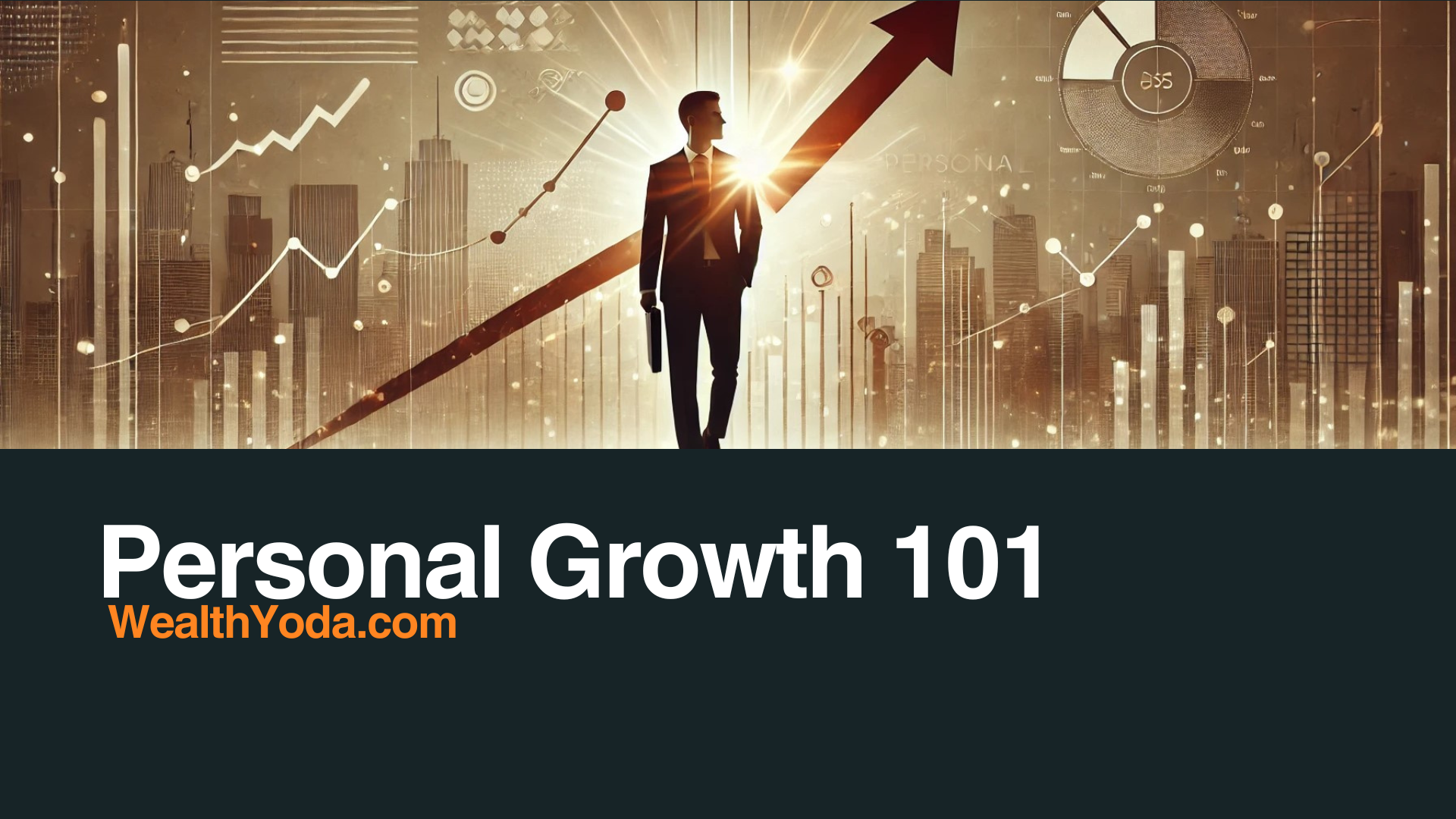#6 Overlook Customer Feedback
In 2024, customer feedback is one of the most valuable resources an entrepreneur can tap into. Ignoring or overlooking it can be a fatal mistake. Your customers are the lifeblood of your business, and their opinions, experiences, and needs provide direct insight into how you can improve your product, service, or overall customer experience. Businesses that fail to actively listen to their customers often lose them to competitors who are more responsive and agile in addressing customer demands.
1. Why Customer Feedback is Critical
Customer feedback is a window into your business from an outside perspective. While you may have a strong vision for your product or service, how your customers perceive it might be entirely different. Feedback helps identify pain points, unmet needs, and areas where your business could improve. It also shows customers that you value their opinions, which helps build loyalty and trust.
Example: McDonald’s Menu Changes Based on Customer Feedback
In the early 2000s, McDonald’s experienced declining sales and shifting customer preferences. Many consumers were gravitating towards healthier options, while McDonald’s was still largely known for its traditional burgers and fries. To address these concerns, McDonald’s started paying close attention to customer feedback that indicated a growing demand for healthier food choices.
In response, McDonald’s introduced healthier menu options like salads, fruit, and wraps, while also reducing portion sizes and offering calorie counts on menus. This pivot, driven by customer feedback, helped the brand regain its footing and appeal to a broader range of customers who were looking for healthier fast-food options. Today, McDonald’s continues to evolve its menu based on customer preferences, keeping the company relevant in a competitive market.
2. The Consequences of Ignoring Feedback
Entrepreneurs who ignore or dismiss customer feedback risk alienating their customer base, losing valuable insights, and making decisions that don’t align with what the market truly wants. Feedback provides a roadmap for innovation, while ignoring it can lead to stagnation or even business failure.
Case Study: Blackberry’s Downfall
In the early 2000s, Blackberry was the leading smartphone brand in the world, dominating the market with its secure email features and physical keyboard. However, as consumer preferences shifted toward touchscreen smartphones with better multimedia capabilities (driven by the rise of the iPhone and Android devices), Blackberry failed to adapt.
While customer feedback clearly indicated a growing demand for touchscreens and app ecosystems, Blackberry clung to its traditional keyboard design and business-first approach. By the time Blackberry attempted to catch up with a touchscreen model, it was too late—competitors had already taken over the market, and Blackberry’s loyal customers had moved on. Ignoring customer feedback cost Blackberry its position as a market leader.
3. Listening to Feedback Leads to Innovation
On the flip side, entrepreneurs who embrace customer feedback often find it to be a powerful tool for innovation and growth. When you actively seek out and listen to customer input, you can identify opportunities to improve your offerings, create new products, or refine your customer experience. The result is often increased customer satisfaction, loyalty, and even word-of-mouth referrals.
Example: Airbnb’s Continuous Adaptation
Airbnb has built its success on a feedback-driven approach. Early on, the company faced several challenges, including concerns from both hosts and guests about safety, reliability, and the overall booking experience. Rather than ignoring these issues, Airbnb actively listened to user feedback and used it to improve their platform.
One major concern was guest safety, as people were hesitant to stay in homes of strangers. In response, Airbnb introduced a robust review and rating system that allowed both hosts and guests to rate each other. They also introduced features like AirCover, a comprehensive insurance policy for hosts to protect against damages. These changes, driven by user feedback, helped build trust within the platform, contributing to its exponential growth.
Additionally, Airbnb constantly gathers feedback on its user interface, the booking process, and the overall customer experience, leading to continuous improvements in the platform. This feedback-driven innovation has been a key factor in the company’s global success.
4. How to Effectively Gather Customer Feedback
Customer feedback is only useful if you actively seek it out and know how to interpret it. Entrepreneurs need to create multiple touchpoints where customers can easily share their opinions and experiences.
Strategies for Gathering Feedback:
- Surveys: Use tools like SurveyMonkey or Google Forms to send post-purchase or post-interaction surveys. Keep the questions simple and focused on key areas of customer satisfaction.
- Social Media Monitoring: Customers often share their thoughts on social media. Monitor platforms like Twitter, Facebook, and Instagram to get a real-time sense of customer sentiment.
- Product Reviews: Platforms like Amazon or your own e-commerce website provide valuable insights through customer reviews. Pay attention to both positive and negative reviews to identify trends.
- Focus Groups: Gather a group of loyal customers for in-depth feedback. This qualitative approach allows you to dive deeper into customer pain points and expectations.
- Direct Communication: Engage directly with customers through email, phone calls, or live chats. This can provide more personalized insights and help you build stronger customer relationships.
Example: Starbucks’ “My Starbucks Idea” Platform
In 2008, Starbucks launched the “My Starbucks Idea” platform, allowing customers to submit suggestions for improving products, services, and store experiences. The platform empowered Starbucks’ loyal customer base to contribute to the company’s innovation pipeline, with many ideas—such as free Wi-Fi, the Starbucks rewards app, and even new drink flavors—being implemented.
By listening to and acting on customer feedback, Starbucks has been able to stay relevant and retain its customer loyalty, all while evolving its brand to meet changing consumer needs.
5. Actionable Steps to Implement Customer Feedback
Collecting feedback is only half the battle; you must also implement it. Here’s how to effectively turn customer feedback into business improvements:
- Analyze the Feedback: Look for patterns and recurring themes in the feedback you receive. Are customers frequently mentioning a particular issue or feature request? Use these insights to prioritize improvements.
- Make Changes: Once you identify actionable feedback, implement the necessary changes. Whether it’s refining your product, updating your website, or offering new services, acting on customer feedback demonstrates that you value their input.
- Communicate the Changes: Let your customers know that their feedback has been heard and acted upon. Announce new features or improvements through email newsletters, social media, or your website. This reinforces the idea that your company listens and cares about customer satisfaction.
- Continue the Feedback Loop: Customer needs evolve over time, so don’t just gather feedback once—make it an ongoing process. Regularly seek out new input to ensure you stay aligned with your customers’ expectations.
Example: Amazon’s Customer-Centric Approach
Amazon is renowned for its customer-centric philosophy, which is deeply rooted in feedback. Amazon constantly gathers customer input through product reviews, customer service interactions, and even user behavior on the site. This data helps Amazon improve its recommendation algorithms, delivery systems, and overall shopping experience.
For example, Amazon Prime was largely driven by customer demand for faster shipping. By listening to customers who expressed frustration over long shipping times, Amazon introduced Prime, which now offers same-day or next-day delivery in many areas. This feedback-driven innovation has been critical to Amazon’s success and its reputation for providing exceptional customer service.
#7 Neglect Sustainable Practices
In 2024, sustainability has become more than just a buzzword—it’s a necessity for businesses looking to thrive in the modern market. Consumers, governments, and even investors are prioritizing sustainability, and companies that fail to adopt eco-friendly practices risk losing customers, facing regulatory challenges, and damaging their reputations. For entrepreneurs, neglecting sustainability isn’t just a missed opportunity—it’s a serious risk to long-term success.
1. Why Sustainability Matters More Than Ever
Sustainability is increasingly important for several reasons:
- Consumer Demand: Today’s consumers, especially millennials and Gen Z, actively seek out brands that are environmentally responsible. According to a Nielsen report, 73% of global consumers say they would definitely or probably change their consumption habits to reduce their impact on the environment.
- Regulatory Pressure: Governments are tightening regulations on emissions, waste, and resource use. Businesses that fail to comply with these regulations can face fines or operational restrictions.
- Investor Interest: Many investors now consider Environmental, Social, and Governance (ESG) criteria when making investment decisions. Companies that prioritize sustainability are more likely to attract investment from funds focused on long-term growth.
Neglecting sustainable practices means missing out on the competitive advantages that eco-friendly businesses enjoy, from customer loyalty to investment capital.
Example: Patagonia’s Commitment to Sustainability
One of the most well-known examples of a company fully embracing sustainability is Patagonia, the outdoor clothing brand. Patagonia has built its brand around environmental stewardship, using eco-friendly materials, reducing waste, and even encouraging customers to repair their products instead of buying new ones.
In 2011, Patagonia famously ran an ad in The New York Times on Black Friday that read, “Don’t Buy This Jacket”, urging customers to consider the environmental impact of consumerism. This bold move not only reinforced the company’s sustainability commitment but also resonated with environmentally conscious consumers, leading to increased sales and stronger customer loyalty. Patagonia’s business model proves that sustainability can be a core driver of success, not just a marketing angle.
2. The Consequences of Ignoring Sustainability
Entrepreneurs who neglect sustainable practices face numerous risks. Consumers are increasingly conscious of the environmental impact of the brands they support, and businesses that ignore this trend may lose customers to competitors who are more environmentally responsible. Additionally, regulatory penalties for failing to meet environmental standards can have a direct financial impact.
Case Study: ExxonMobil’s Environmental Backlash
In recent years, ExxonMobil, one of the largest oil companies in the U.S., has faced significant backlash for its environmental practices. Despite being aware of the environmental risks of fossil fuel extraction and carbon emissions for decades, ExxonMobil was slow to invest in sustainable energy solutions.
As a result, the company has faced lawsuits, investor pressure, and significant reputational damage. In 2021, ExxonMobil shareholders voted to replace three of its board members with climate-focused candidates, signaling that even traditional energy companies must adapt to the growing demand for sustainable practices or face consequences from both investors and consumers.
3. Sustainability as a Competitive Advantage
Rather than seeing sustainability as a burden, entrepreneurs can use it as a competitive advantage. Businesses that invest in sustainable practices can reduce costs through more efficient resource use, attract eco-conscious consumers, and stand out in their industry as leaders in social responsibility.
Example: Tesla and the Electric Vehicle Revolution
Tesla, led by Elon Musk, has built its entire business model around sustainability. By producing electric vehicles (EVs) and promoting renewable energy through products like solar panels and battery storage, Tesla has positioned itself at the forefront of the green energy revolution. The company’s commitment to sustainability has not only helped it dominate the EV market but also attracted a passionate customer base and investors who prioritize ESG criteria.
Tesla’s focus on sustainability has allowed the company to differentiate itself from traditional automakers and capitalize on the growing demand for clean energy solutions. The company’s market valuation surpassed that of established automotive giants, despite selling far fewer vehicles, demonstrating that sustainable innovation can lead to outsized success.
4. How Entrepreneurs Can Implement Sustainable Practices
Adopting sustainability in your business doesn’t have to be a monumental task. Entrepreneurs can start with small steps and scale up their efforts over time. Here are some actionable ways to implement sustainable practices in your business:
- Reduce Waste: Focus on minimizing waste in your operations. This could include reducing packaging materials, recycling, and encouraging customers to reuse products.
- Energy Efficiency: Invest in energy-efficient technologies to reduce your carbon footprint. Simple changes like using LED lighting, upgrading to energy-efficient appliances, and optimizing heating and cooling systems can have a big impact.
- Sustainable Sourcing: Ensure that the materials you use in your products or supply chain are ethically sourced and environmentally friendly. This could include using recycled materials, sourcing from suppliers with green certifications, or reducing the carbon footprint of your logistics operations.
- Water Conservation: For businesses that use significant amounts of water (e.g., agriculture, manufacturing), implementing water-saving technologies and practices can reduce costs and improve sustainability.
- Educate and Engage Customers: Educate your customers about the sustainable aspects of your business and encourage them to make environmentally responsible choices. Offering incentives for recycling or promoting products made from eco-friendly materials can engage customers in your sustainability mission.
Example: Levi’s Water<Less Initiative
Levi’s, the iconic denim brand, recognized the environmental impact of water use in its manufacturing process and launched its Water<Less initiative in response. The initiative focuses on reducing water consumption in the production of its jeans, using innovative techniques that require up to 96% less water in some products.
Since the launch of the Water<Less initiative in 2011, Levi’s has saved more than 3 billion liters of water. This sustainable practice not only reduces Levi’s environmental impact but also appeals to environmentally conscious consumers. It’s a prime example of how sustainability initiatives can align with both business interests and consumer demands.
5. The Future of Business is Green
In 2024 and beyond, sustainability will only become more central to business strategy. As climate change continues to impact the global economy, consumers and investors will increasingly prioritize companies that take meaningful steps to reduce their environmental impact. Entrepreneurs who integrate sustainability into their core business strategy will be better positioned to navigate regulatory changes, meet customer expectations, and capitalize on emerging market opportunities.
Case Study: Walmart’s Sustainability Journey
Walmart, the world’s largest retailer, has made significant strides toward sustainability in recent years. In 2005, Walmart set ambitious goals to reduce waste, use more renewable energy, and sell sustainable products.
Walmart’s Project Gigaton aims to eliminate 1 gigaton of greenhouse gases from its supply chain by 2030. The company has also worked to improve the sustainability of its products, offering more eco-friendly options and encouraging suppliers to reduce their environmental impact. By prioritizing sustainability, Walmart has reduced operational costs and improved its public image, demonstrating that even large corporations can successfully adopt sustainable practices.
#8 Focus Only on Short-Term Gains
In 2024, many entrepreneurs are tempted to chase quick profits, especially in a business landscape that values rapid growth and immediate results. However, focusing only on short-term gains can be a risky approach that jeopardizes long-term success. Short-term strategies may provide a temporary boost, but they often come at the expense of sustainability, customer loyalty, and innovation. The most successful entrepreneurs build businesses that grow steadily over time, and this requires long-term thinking, strategic planning, and patience.
1. The Risks of Short-Term Focus
When entrepreneurs focus solely on short-term gains, they often prioritize immediate profits over long-term stability. This can lead to decisions that might increase revenue temporarily but harm the business in the long run. For example, cutting corners on product quality, overloading employees to meet short-term targets, or ignoring customer feedback in pursuit of faster profits can all backfire.
Case Study: Wells Fargo’s Short-Term Incentive Disaster
One of the most notorious examples of the dangers of focusing on short-term gains is the Wells Fargo scandal. To meet aggressive sales goals and drive up short-term profits, employees at Wells Fargo opened millions of unauthorized accounts without customer consent between 2011 and 2016. This was part of an internal culture that prioritized immediate financial results over ethical practices and customer trust.
The short-term strategy worked—Wells Fargo initially saw growth in new accounts and sales—but the long-term consequences were disastrous. When the fraudulent activity came to light, the company faced severe fines, legal repercussions, and a massive loss of customer trust. Wells Fargo’s stock price plummeted, and the scandal led to the resignation of several top executives. The damage to its reputation continues to hurt the company years later.
This case highlights the dangers of sacrificing ethics and long-term planning for quick gains. Entrepreneurs who chase short-term wins without considering the long-term impact risk damaging their brand, customer loyalty, and ultimately, their business.
2. The Benefits of Long-Term Thinking
Entrepreneurs who focus on long-term growth understand that sustainable success takes time. Instead of chasing every trend or trying to hit short-term profit targets, they invest in building a strong foundation, fostering customer loyalty, and improving their products or services over time. This approach leads to more consistent growth, greater innovation, and better customer retention.
Example: Amazon’s Long-Term Strategy
Amazon is a prime example of a company that embraced long-term thinking over short-term gains. For many years after its founding, Amazon operated at a loss or with razor-thin margins as it invested heavily in infrastructure, technology, and customer experience. Many critics at the time questioned whether Amazon’s strategy was sustainable, but founder Jeff Bezos was focused on building a company for the long haul.
Instead of chasing immediate profits, Amazon focused on customer satisfaction and expanding its logistics network to support fast, reliable shipping. This long-term strategy paid off, as Amazon became the dominant force in e-commerce and expanded into areas like cloud computing, streaming services, and artificial intelligence.
Amazon’s willingness to forgo short-term profits in favor of long-term growth allowed it to build a sustainable, diversified business that continues to innovate and expand globally. Entrepreneurs can learn from Amazon’s example by investing in areas that will drive future growth, even if the returns aren’t immediate.
3. Short-Term Tactics Can Harm Customer Loyalty
When businesses focus on short-term profits, they often neglect customer satisfaction, which can lead to poor retention rates. While aggressive sales tactics or cost-cutting measures may temporarily boost profits, they often alienate customers who are looking for quality and trust.
Case Study: Uber’s Focus on Rapid Expansion
In the early years, Uber aggressively focused on rapid expansion to capture market share. The company prioritized short-term growth, scaling quickly across cities worldwide, often at the expense of long-term considerations like driver satisfaction, regulatory compliance, and customer trust.
While Uber’s initial strategy helped it grow quickly, the company faced significant backlash from drivers and customers over issues like unfair pay, safety concerns, and a toxic corporate culture. Uber’s focus on short-term market domination led to lawsuits, regulatory challenges, and a damaged public image. The company has since had to invest heavily in rebuilding trust with both customers and drivers, which has taken years.
This example illustrates how a focus on short-term gains can lead to long-term damage. Entrepreneurs who prioritize customer satisfaction and trust, even if it means slower growth initially, are more likely to build sustainable businesses.
4. How Short-Term Profit-Driven Decisions Can Stifle Innovation
Focusing too much on short-term profits can limit a company’s ability to invest in innovation. Businesses that are constantly trying to hit quarterly targets may be reluctant to take risks or invest in research and development. However, innovation is often the key to staying competitive in a rapidly changing market.
Example: Kodak’s Missed Opportunity
Kodak, once a leader in photography, is an example of how short-term thinking can stifle innovation and ultimately lead to a company’s downfall. In the late 1970s, Kodak developed the first digital camera but chose not to pursue the technology because it feared cannibalizing its highly profitable film business.
Instead of investing in digital technology, Kodak continued to focus on short-term gains from its film sales. As competitors like Sony and Canon embraced digital cameras, Kodak found itself struggling to catch up. By the time Kodak shifted its focus to digital, it was too late—the company filed for bankruptcy in 2012, having missed the opportunity to lead in the digital photography revolution.
Kodak’s failure to prioritize long-term innovation in favor of short-term profits serves as a cautionary tale for entrepreneurs. Building a sustainable business requires investing in the future, even if it means sacrificing some immediate gains.
5. Actionable Steps for Long-Term Success
Entrepreneurs looking to avoid the pitfalls of short-term thinking can take several steps to build a business with long-term potential:
- Invest in Innovation: Allocate resources to research and development, even if the returns aren’t immediate. Staying ahead of industry trends and developing new products or services will help you stay competitive over time.
- Focus on Customer Relationships: Prioritize customer satisfaction and loyalty over quick sales. Providing exceptional service and listening to customer feedback can lead to long-term customer retention and referrals.
- Build a Sustainable Business Model: Instead of relying on tactics that deliver short-term profits, such as slashing prices or cutting corners, focus on building a business model that is scalable and sustainable.
- Be Patient with Growth: Understand that building a successful business takes time. Avoid the temptation to rush growth by making decisions that may harm the company in the long run. Instead, focus on steady, consistent progress.
- Reinvest Profits: Rather than extracting profits for personal gain, reinvest a portion of your earnings into the business. This could include improving infrastructure, hiring talent, or expanding into new markets.
Example: Google’s Long-Term Investment in Innovation
Google is a company that has consistently prioritized long-term innovation. While its core business remains search and advertising, Google has invested heavily in areas like artificial intelligence (AI), self-driving cars, and cloud computing through its parent company Alphabet.
Google’s long-term approach to innovation has allowed it to remain at the forefront of technology, even as competitors emerge. The company’s willingness to invest in moonshot projects—such as Waymo (its self-driving car initiative) and Google Brain (AI research)—demonstrates how focusing on long-term innovation can lead to breakthroughs that redefine entire industries.
Final Thoughts
In 2024, the business landscape is fast-paced and filled with opportunities, but it also presents significant challenges for entrepreneurs. One of the biggest mistakes you can make is focusing solely on short-term gains. While quick wins may offer temporary satisfaction, they often come at the expense of long-term sustainability, customer loyalty, and innovation.
As seen in the cases of Wells Fargo, Kodak, and Uber, prioritizing short-term profits over ethical practices, customer satisfaction, or forward-thinking innovation can lead to long-lasting damage—financially and reputationally. On the other hand, companies like Amazon, Tesla, and Google have demonstrated the value of long-term thinking, investing in innovation, and building strong relationships with customers.
The key takeaway for entrepreneurs is to adopt a long-term mindset. Focus on creating value, building trust, and staying adaptable in an ever-changing market. By reinvesting in your business, prioritizing customer needs, and making thoughtful decisions that benefit your company in the long run, you can set your business up for sustained success. Remember, entrepreneurship is a marathon, not a sprint—steady, strategic growth is far more rewarding than chasing short-lived gains.



